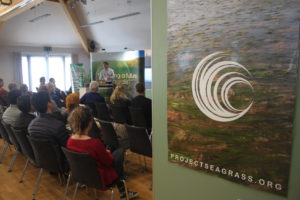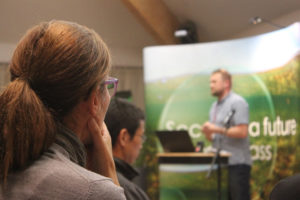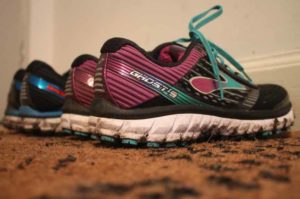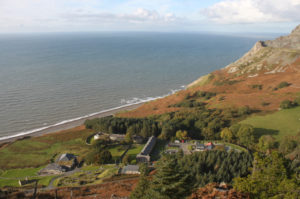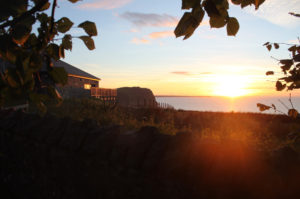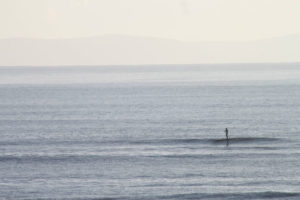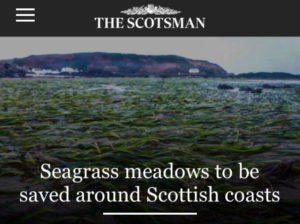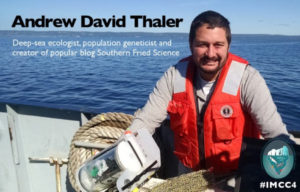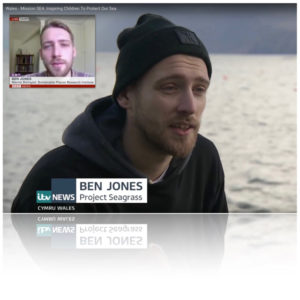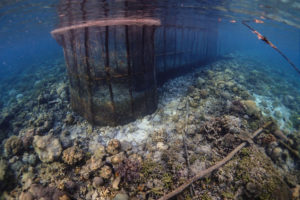As I sit at my desk looking back at 2016 it occurs to me that one of the biggest challenges we faced as an organisation was “getting the word out” about ISBW12. It’s one thing getting the global seagrass community on board (and transported to a VERY SMALL village in north Wales!), but it’s quite another communicating the importance of such an event to the public… Why should they care? The benefits of bringing the global seagrass community to our home patch have been numerous, and not just linked to what knoweldge and experience we have taken from the experience as a team. Intangiably we have also helped raise the profile of seagrass ecosystems in a country where traditionally they have been little discussed or even acknowledged. Part of the job of communcating this conference was therefore in marketing ISBW12 through social media and traditional media channels. Social media communication is a medium in its own right, but there is still a lot to be said for the value of a coherent press release. Whilst not all of your press releases may make the final cut and get published, it is still worth taking the time and effort to customise your press relases to suit the particular news outlet, be that for a global provider such as the BBC, a national newspaper or more local press. “Know your audience” – rural Wales will have a different appetite for news to urban Scotland. For example, below is a press relase I wrote specifically for The Scotsman newspaper (this one was never used since I was invited to write an opinion piece instead). The key here was to acknowledge the audience. The event was taking place in Wales, so why should anyone in Scotland care? In this case it was important to take the time to personalise the piece to the audience, principally how does it relate to Scotland? For example, are Scottish scientists involved? Or are Scottish scientists attending? Knowing your audience and news outlets writing style is key to getting the word out there. We recieved a lot of news coverage during the conference and a lot of that success comes down to being prepared to tell the same story but in a different way… I want to wish the best of luck to the team oraganising ISBW13! I hope this little reflection provides some insight effective science communication. What I must stress though is that there is no substitute for expertise, and so I want to publically acknowledge the contribution of science communication guru Edd Hind-Ozan in making ISBW12 such a success! Personally i’ve learnt a lot from you… So cheers buddy, it wouldn’t have been the same without ya! RJ Press Release Example: Scottish scientists support global call to protect “lungs of the sea” More than 140 scientists have signed a statement ahead of next week’s International Seagrass Biology Workshop, urging the world’s media to publicise the plight of one of the planet’s most overlooked, yet important natural environments – seagrass meadows. This includes scientists based at Scottish marine conservation charity ‘Project Seagrass’. Seagrass meadows, like those we have in Scotland, are critical habitats for marine life and are a home to many species important to the national fishing industry, such as cod and plaice. “Seagrass meadows are at least as economically and ecologically important as better known tropical rainforests or coral reefs,” said marine scientist Richard Lilley, founding director of conservation charity Project Seagrass and co- ordinator of the Scottish Seagrass Network. “Globally, seagrass meadows create an amazingly productive habitat for a plethora of fish and well-known seafood species like seabreams, lobster and shrimp”. A signatory to the statement, Lilley continued, “Destruction of seagrass meadows leads in turn to the loss of the marine animals they support. Protecting such value into the future is critical.” ‘ECONOMICALLY AND ECOLOGICALLY IMPORTANT’ The statement highlights the global importance of seagrass meadows, which are comprised of underwater flowering plants rather than the more common seaweed. These “powerhouses of the sea create life in otherwise muddy environments”. The statement describes how the ocean prairies are “key fishing grounds”, as well as “one of the most efficient oceanic stores of carbon on earth”, the latter meaning that they play a crucial role in preventing human emissions of carbon dioxide contributing to damaging climate change. The statement, organised by Project Seagrass co-director and president of the World Seagrass Association, Dr Richard Unsworth, calls on all national governments and international policy-makers to “take local, regional and global action to ensure the future survival of seagrass meadows”. The motive for the statement’s release is to bring an end to “the loss of seagrass from human induced impacts such as poor water quality, coastal development, and destructive fishing.” In Scotland, much work is already being undertaken by scientists and conservation charities to prioritise these threatened habitats. This includes the development of a new initiative called ‘Seagrass Spotter’, a ‘citizen science’ project which any member of the public can volunteer to take part in. SeagrassSpotter, downloadable as a smartphone or tablet app (www.seagrassspotter.org), encourages the general public to report sightings of seagrass around the Scottish coast. “So far, Seagrass Spotter has been embraced by a number of groups around the Scottish coast with sightings coming from the Isle of Barra to the Firth of Forth. But, we need to understand more about where our seagrasses are and their health status. By taking photos and answering simple questions about the seagrass we can begin to understand more about the status of this amazing resource.”, explained Lilley. ‘SECURING A FUTURE FOR SEAGRASS’ NERC funded PhD student Maria Potouroglou of Edinburgh Napier University has been quantifying the extent to which Scottish seagrasses are able to absorb and store carbon dioxide in the coastal sediments. “Seagrasses in Scotland have already stored around 20 Megatonnes of carbon dioxide in our coastal sediments, stored carbon that would otherwise have ended up in our atmosphere contributing to climate change”. Keen, however, to emphasise that humans are also the answer to the travails of seagrass, the marine experts raise hope through
